SEO is the need of an hour. SEO is important for hundreds of reasons like it is the investment for high return. SEO is the best marketing strategy as it brings organic traffic. SEO practices make your site authoritative and trustable. Now the question comes, how does SEO work? Well, I have a complete SEO guide. The following article will provide you with SEO guidelines:

Page Contents:
How Does Search Engine Work?
Search engine working has three stages, namely:
- Crawling
- Indexing
- Serving search results
Crawling
The process of finding, visiting and downloading a web page by search engines is crawling. It is a periodic function done by a search engine crawler or spider.
The crawlers first find the available web pages, as all the pages may not have a central registry. They began with downloading the robot.txt file containing the rules, like which part of the site can be crawled and which cannot.
The robot.txt file may contain information about the sitemaps and the page’s content. Search engines continuously search for new pages on your website and add them to their known page list. This is called “URL DISCOVERY.”
Some pages are already known to the crawlers, and some are discovered discovering URLs by following the links available on the web. For example, when a website links a new blog to its hub page.
Once the crawlers know the URLs, they move to the second step, exploring and inspecting the content on the web and its linked page. The crawlers then fetch the content. These crawlers use an algorithm process to determine how repeatedly pages need crawling. The pages which change frequently have to be crawled in the same manner. For example, news websites have daily updates.
The crawlers can be recognized by the agent string passing them to the web server after requesting the web pages. Agent strings are the full description of the crawlers which appear in the HTTP request and your weblogs. Some examples of crawlers with their respective agent string are as follows:
- Googlebot User Agent
Mozilla/5.0 (compatible; Googlebot/2.1; +https://www.google.com/bot.html)
- Bingbot User Agent
Mozilla/5.0 (compatible; bingbot/2.0; +https://www.bing.com/bingbot.htm)
- Baidu User Agent
Mozilla/5.0 (compatible; Baiduspider/2.0; +https://www.baidu.com/search/spider.html)
- Yandex User Agent
Mozilla/5.0 (compatible; YandexBot/3.0; +https://yandex.com/bots)
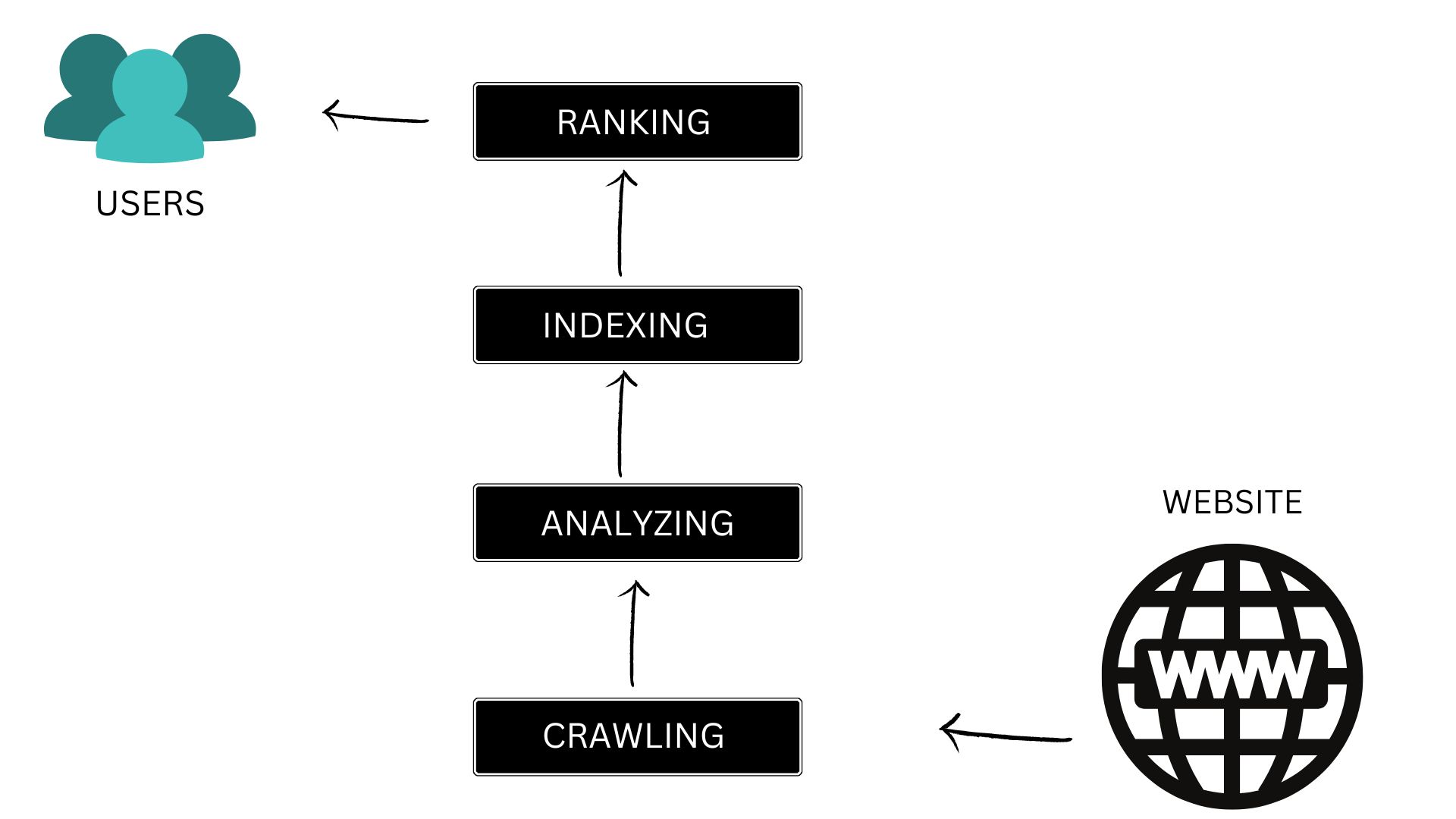
Indexing
Indexing is the most vital process after crawling. The process of gathering and organizing the data in one place is called indexing. Indexing helps improve the database performance by minimizing the number of disc visits required to fulfill a query. Indexing includes processing, analyzing, and categorizing the web page’s text, pictures, etc.
Google inspects where the page duplicates another page of the same topic or canonical. Canonical pages those having similar content. These canonical pages are clustered first and then again analyzed. The best pages representing this group is then should on SERP. The other pages are shown when the query is very specific and ask for results from any specific page.
Your website, once indexed, can also be removed from the index. The season for removal can be as follows:
- URL not found because of 4xx or 5xx errors, which can be accidental or intentional.
- The URL had no index meta tags. Web developers or owners usually do this to omit to index.
- URL penalized manually for disobeying search engines guidelines
- Crawlers were blocked and couldn’t crawl the URL.
Serving search results: ranking
After crawling and indexing, the next major task of a search engine is sorting all the data available. They present the most appropriate data in response to your query. The applicability of the content according to the query decides the website’s ranking on the result page.Let’s understand how search engines show the result.
The first step for showing a result is to understand the search intent of the query by the terms used to ask the question. The next is to sort the pages related to the question. After this, the best quality of the relevant content is shown. According to the website’s usability, the rankings are done, and the search engine result pages appear. There is no substitution for authoritative and great content.
What Is SERP?
Search engine result pages (SERP) contain answers to your query you posted on any search engine. For example, when you ask a search engine for places to visit in Bhopal, a page containing links to different websites.
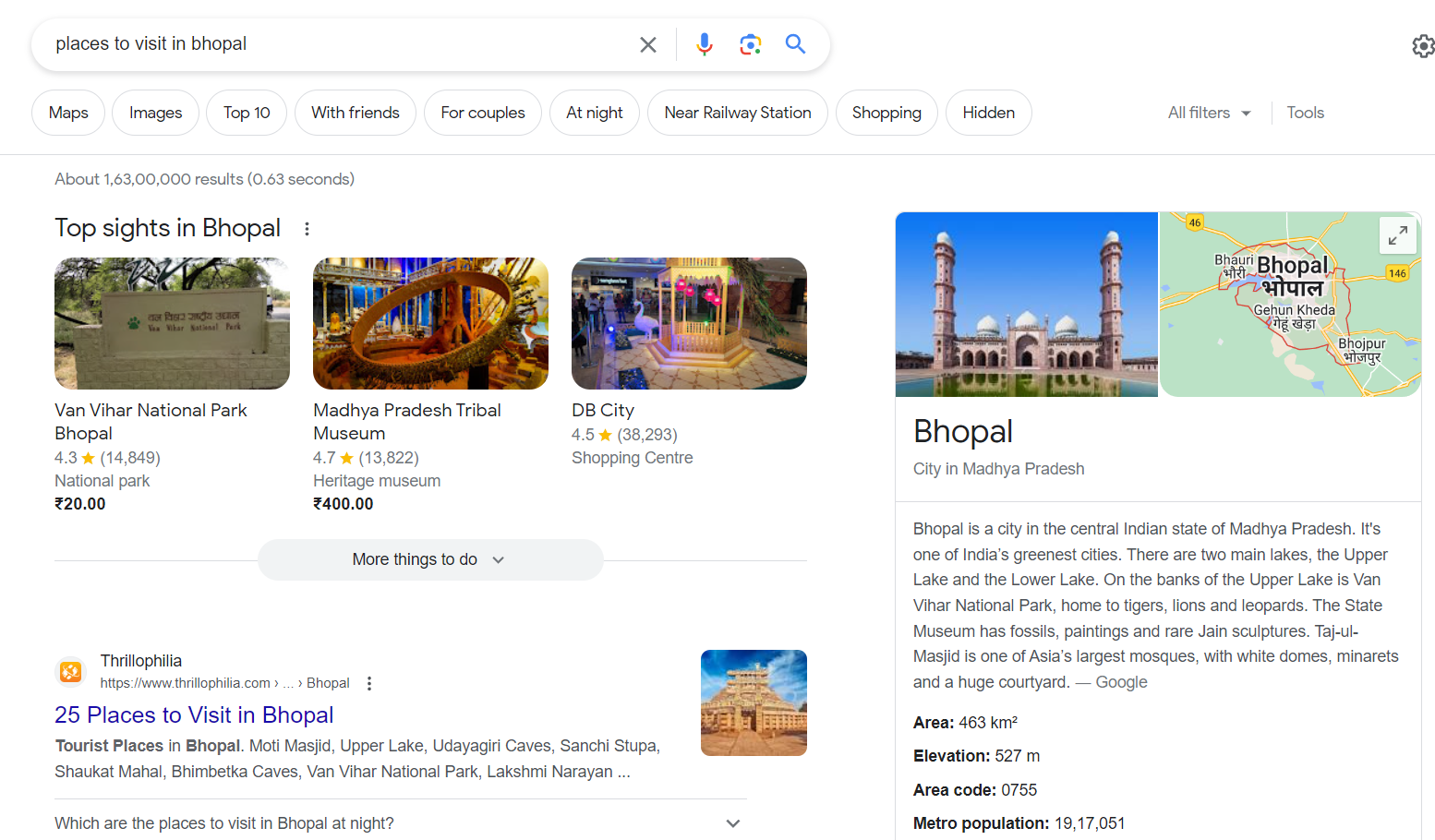
The search engine market share are Google 93.12% , Bing 2.77%, Yandex 1.15%, Yahoo! 1.11%. It concludes that Google dominates the search engine market.

Features of SERP
- Featured snippets: snippets are the highlights of a webpage based on the best-suited answer for the query. These are at the top below the ads. Google now mixes snippets into the search results.

- People also ask boxes: search engines show related popular queries from other users for your searches.
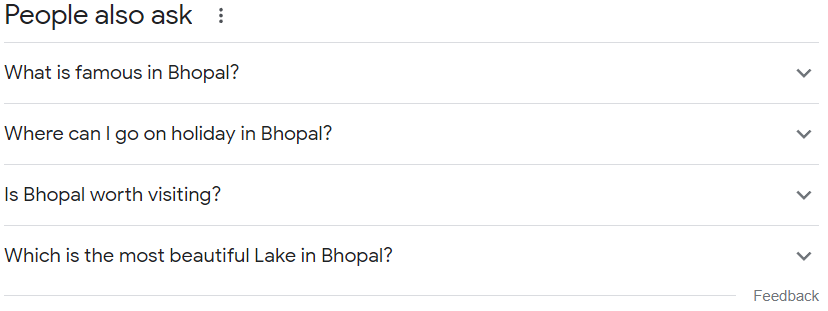
- Image and video carousels: these are related videos and images which appear on the top of the pages
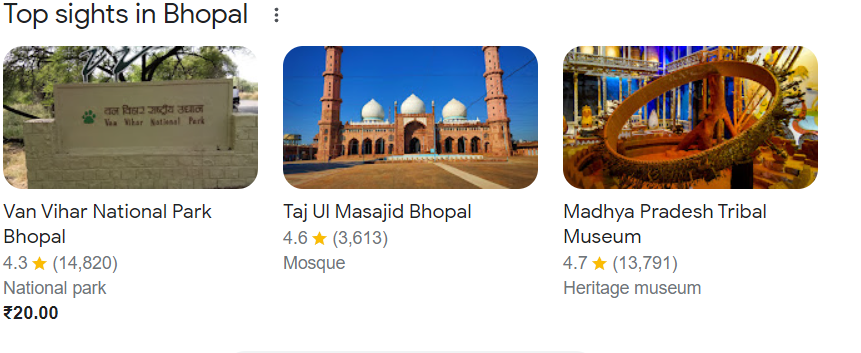
- Site links, top stories, local packs, etc., are the other features of the SERP
What Is SEO & How SEO Works?
SEO stands for Search Engine Optimization. It amends a website’s technical, content relevance, and link popularity. It is designed so the websites and customers can get the most out of each other. The SEO keywords in every part of the website, like the URL, meta description, content, etc.
An important aspect of ranking higher on SERPs is search engine optimization (SEO). SEO works as a feedback system for a website by optimizing the content on and off the website, carrying out keyword research, and getting more backlinks, therefore improving your SERP visibility. The feedbacks here are from the search engines and the site visitors. The main aim of SEO is to provide quality content to the audiences.
Let’s look at the various stages of SEO:
- The SEO work starts with creating the content itself. We must attract crawlers and visitors to our website to get higher rankings in the SERPs. For this purpose, we have to start optimizing the plot of the content links by finding keywords related to your content.
- Put them in the page titles, URLs, meta descriptions, and content. Optimize the page’s technical and non-technical aspects, such as the page loading speed, quality of the images, mobile-friendly versions, etc.
- Now, the search engines start processing by crawling and indexing your data and presenting it to the searchers as a result of their query. The order of search engine result pages is based on stage one, content optimization.
- The most crucial stage of SEO is consumers’ interaction with the websites. The search engines observe the activity of the consumers on the SERPs and the website they choose. Based on these interactions, your site’s rank is increased or decreased. If your site’s traffic increases, therefore, your domain authority increases.
The journey from a website to becoming a brand name is impossible without SEO. It is the most genuine criterion for ranking a website based on its quality of content and user experience. The following reasons make it a necessity for any website.
Organic traffic source:
50% of the traffic on a website is organic. Your site will only be visible to visitors with an acceptable SEO score. A good SEO will increase visibility and, in turn, ranking, thus more organic traffic and chances of getting genuine and potential customers. Organic traffic improves credibility and makes your content trustworthy.
SEO – the voice of customers:
SEO reports are the customer behavioral reports in response to your business and website. A good SEO indicates that customers have a good experience on your website. Therefore you ranked higher in the SEO ranking and invited more visitors to turn into customers. It influences the buying cycle. Hence the conclusion is that a better SEO will result in a better return on investment and boost the growth of your business with a cost-effective strategy.
Search Engine Ranking Factors
All search engines have different algorithms and ranking criteria, but some of the most common and important ranking factors applicable to all search engines are as follows:
- Content quality: High-quality content is the most crucial ranking factor. Even if you have a perfectly seo optimized site and your content quality is not up to the mark, your ranking will be affected. High-quality content increases time on the page, lowers the bounce rate, and provides useful content for users.
- Content length: Long-form contents cover a detailed topic explanation and are preferred in the algorithm to short content. Word count ranking, presence of linked table of content, keyword density, etc., helps long content to rank higher.
- Backlinks: Relevant links from other sites help search engines identify your page’s trustworthiness. It acts like a vote of confidence for your websites. The number of backlinks and referring domains will matter if they are relevant to your content and are from reliable sources.
- Page speed: After being the desktop-only ranking factor, page speed became a major mobile ranking factor. Users expect a quick browsing experience. Quick-loading pages are more likely to get more traffic.
- Freshness: Search engines check whether you have updated your content or how often you update your content. The Latest information about any query is now a content ranking factor.
- Domain authority: An SEO company like Moz invented domain authority, generating a score from 1 to 100. the higher your domain authority score higher you will rank. It includes factors like user reviews, site reputation, backlinks, etc.
- Effective keywords: We already know how important keywords are for SEO. But using a keyword who have an effective search volume will bring results. These should match the search intent of the users. RankBrain is a machine learning algorithm that increases or decreases your ranking depending on keywords. It provides the most relevant search results according to the search intent.
- Site architecture: Site architecture tells about how the pages of a website are linked. These include meta descriptions, anchor text, and other on-page information. The better your site architecture, the higher your ranking chances.
- HTTPS/ URL structure: HTTPS improves websites security and is a lightweight Google ranking factor.HTTPS encryption is a small ranking signal for search engines, as announced by Google in 2014.
- Internal linking: Suppose you have relevant internal linking pages with descriptive anchor text pointing to your important pages. Search engines will consider them very important and rank them higher.
- Mobile-friendliness: Mobile friendliness is among the most important ranking factors with the increase in mobile users. Mobile-friendly websites rank better in search engines.
- Crawlability: Your page should be fully accessible to web spiders. Your page cannot be indexed and ranked on search engines without crawling.

Organic vs. Inorganic Search Result
Search engine optimization (SEO) and search engine marketing (SEM) aim to increase a website’s visibility on search engines and generate more traffic. SEO emphasizes creating and enhancing webpages to improve their rankings and the visitor’s experience for the long term, whereas SEM is all about paid advertisements.
| Organic Results |
Inorganic Results |
|
|
|
|
|
|
|
|
|
|
|
|
|
|
|
|
|
|
From the above comparison, we can conclude that the organic method of generating traffic is any day better than the inorganic method. Even though paid ads are faster than unpaid ones, they have higher conversion rates than paid ones.
For long-term results, you should always rely on organic results.60% of the traffic on the website is organic, and only 9% of the search queries click on paid ads.
How To Start SEO?
Optimizing crawl budget
The crawl budget is the average URLs a crawler can crawl on the web page before leaving. By optimizing a crawl budget, you can control which pages a search engine crawler can crawl into. Crawl budget optimization ensures that a crawler is not wasting time on unimportant pages and can crawl only important pages.
Optimizing indexing for a website.
You can optimize indexing for your website using certain tools.
Site maps:
There are two types of sitemaps
- XML sitemaps are submitted to search engines. They contain essential page links and rules for crawling and navigating the crawlers through your website.
- HTML sitemaps are user-friendly that navigate visitors through the site’s content—leaving a positive impression on the visitor.
Analytics and Reporting
Analytics collects, collates, and analyzes raw data to attract organic traffic to your website. It helps you to analyze the issues and opportunities for improving your SEO. Reporting tools make analysis easy and quick. It performs tasks like tracking the website’s ranking, data visualization, etc.
Doing detailed SEO analytics and having comprehensive reports gives you a better view of customer demand and solves your queries like: where are you getting the most traffic? Which section of the content do users like the most? Where are your potential customers from? How to get more backlinks? Etc.
The following steps to start analytics and report
- Plan your work
- Set up the right measurement tools
- Set up dashboards and reports
- Review and act on the report so formed
Competitor analysis
The process of researching your competitors to know about their seo strategy and use them to become better. Allows you to review the search landscape. There are four basic types of competitors:
- Those who are new but have a quick growth rate can outrank you anytime
- those who have large audiences and rapid growth.
- Companies with large established audiences, new and relatively companies who have just come into the market
After identifying your competitor, you can follow these steps to decide whom to not compete with. You cannot compete with indirect competitors like Wikipedia. Find those keywords for which your competitors rank, and you don’t. Then fill in the keyword gaps. Identify the strengths and weaknesses of your competitors. Analyze on page seo of the competitor. Observe their backlinking and grab the snippet features.
SEO-Friendly Content
SEO-friendly content is one that fully follows search engine optimization guidelines. From text images, everything serves the best possible information is the goal for creating SEO-friendly content. The SEO-friendly content ranks higher in the SERP and brings huge traffic and conversions to the business. Let’s see some pointers to create SEO-friendly content:
On- page seo it’s the process of finding room for improvement on the on-site aspects. The on-page SEO is divided into three categories content, HTML coding, and site architecture. Let’s see each of them one by one:
Use headings and subheadings:
Headings and subheadings bring a flow of understanding the content in a hierarchical order. They visually appeal to the visitors to read and explore the content more. They improve the SERP visibility for readers and search engines because they contain keywords. Hence appraise your SEO rankings.
10-pointer heading guide
- Only use H1 to H6 heading formats. H1 heading format defines the main heading of your content. Therefore, These heading formats help make a more logical structure of the content.
- Divide each topic of your content into three main sections. The headings, subheadings, and call-to-action. The subheadings strengthen the headings, and the call-to-action brings everything together.
- Headings should be attractive to convince the visitors to read. Subheadings should influence them to explore more about the topic, and the call to action should guide them on what to do next.
- Know when and how to use headings. The main attention should be on dividing the content properly into sections that make sense. Random divisions should not be done.
- Pay attention to subheadings. They differ in the hierarchy info. Subheading enhances the reading experience.
- Use them to separate the topics within your content. It is very important to show the level of importance of each topic and organize the content.
- Keep the headings simple. Focus on being clear than being creative all the time.
- Being consistent with the content structure. You should use the same font size and style for your headings and subheadings.
- Stay consistent with your main topic. Subheadings should relate to the main topic and should not distract the readers from the main idea or plot of the content.
- Do not use big headings. Keep the headings short and crisp. Headings should give the idea of the content in minimal words. Avoid lengthy headings.
Optimize the content length:
It is not only important to create content, but also it is important to optimize its length. It has been observed that longer content is more effective. Word count is very important for a website to even get ranked in search engines. Content should have a 300-word count at least to get ranked in search engines. Let us look at some ideal word counts from different types of content.
- 500-700 words are the standard word count for any type of content.
- 600-800 words are ideal for any professional journalism type of article.
- 1300-1700 words are ideal word count for defining the content and giving answers to questions like What?
- 1600-2000 words are the best average word count for any type of content.
- 1700- 2100 words are best for directing and answering questions like How?
- 2300-2500 words are the golden blog post length. These topics give the best picture of the topic.
- 4000 and above are extremely detailed topics
Benefits of optimizing the length
-
- Long content derives more traffic: word counts are directly proportional to high search traffic. According to a study by SERP IQ, the top 10 results of Google shows article having 2000 words and more. Search engines and users prefer pages with loaded content.
- Long content attracts backlinking: Long contents are comprehensive and decisive, thus useful and draws more backlinks.
- Longer post gets more social shares: according to HubSpot- “post greater than 1500 words on an average 68.1% engagements on Twitter and 22.6% on Facebook.
- Long tails have more keywords: long content can use different synonyms of keywords and long tail keywords, thus suiting for more search results.
- Long-form content increases time on site: compressive and detailed content engages the readers and increases the time spent on your website. According to SERP IQ, the ideal post takes 7 mins to read and is around 1600 words long.
- Long-form content helps you build authority: long content shows your expertise on the topics and builds trust among the readers and the search engines. Trustworthy content gets a higher ranking.
- Long content converts better: long-form content works best just before the purchase decision and boosts the conversion rate.
Keywords for SEO
Keywords are the words or phrases used in searching for any topic by the customers or searchers. These words help expand your visibility and ranking on search engines. Certain types of keywords should be considered and added to the content.
- Long tail keywords are those with long phrases targeting specific audiences on specific topics. These words have less competition and limited traffic. Therefore ranking becomes easy.
- Short tail keywords are the most used words for search. They bring in massive traffic and, of course, have a big competition. These contain one or two words. For example, cotton sarees, coffee mugs, etc.
- Mid-tail keywords fall long and short, with less traffic but a high conversion rate.
- Market segment keywords are generic words that target audiences searching for general information. These words are used in niche marketing.
- Customer-defining keywords are those keywords that define the customers for whom the products are suitable. These represent the customers based on age, gender, occupation, etc., for example, kids’ wear, sportswear for adults, etc.
- Product-defining keywords are those related to the product. These may define the quantity, quality or material, or other content about the product. These are specific to the brands.
- Competitors’ keywords are those your competitor use to optimize their content. You should have good research on how your competitor is optimizing the content.
- Intent-targeting keywords match the users’ intention and are essential for the paid search engine to help marketers work on intent-driven marketing.
- Latent semantic indexing keywords are conceptual phrases that search engines use to understand your website’s content. For example, “Advantages of SEO.”
- Transactional keywords or the do keywords are used by the users who have already decided to buy or access the business’s service.
- Navigational keywords are going keywords used primarily by those buyers who know want they want to buy and from where they will get the product. These can be searched with specific brands or website names.
- Long-term keywords are evergreen keywords that have an impact for a long time. They do not lose their value and are relevant indefinitely. They do not require updates frequently and can withstand fluctuating trends for extended periods.
- Locational keywords are those that define the location of the business. For example, “near me” is now people’s most common locational keyword. Companies use these with storefront and location-based interactions. These keywords can also be called region keywords targeting a particular region.
- Vertical keywords are those that give an in-depth view of products or information. For example, your home appliances are horizontal keywords. Still, if you also use branded microwaves on sale, mixer grinders, etc., these are vertical keywords for a home appliance shop or website.
- Phrase-matching keywords are the precise matches within search engine parameters. For example, “classes for classes 12 biology” is a specific but common keyword.
- Exact matching keywords are similar to short-tail keywords but are used to target the advertisers who open up when users browse the Internet for specific phrases.
- Negative keywords are the opposite of exact-matching keywords. These are used to have a more specific search. They prevent the popping up of ads.
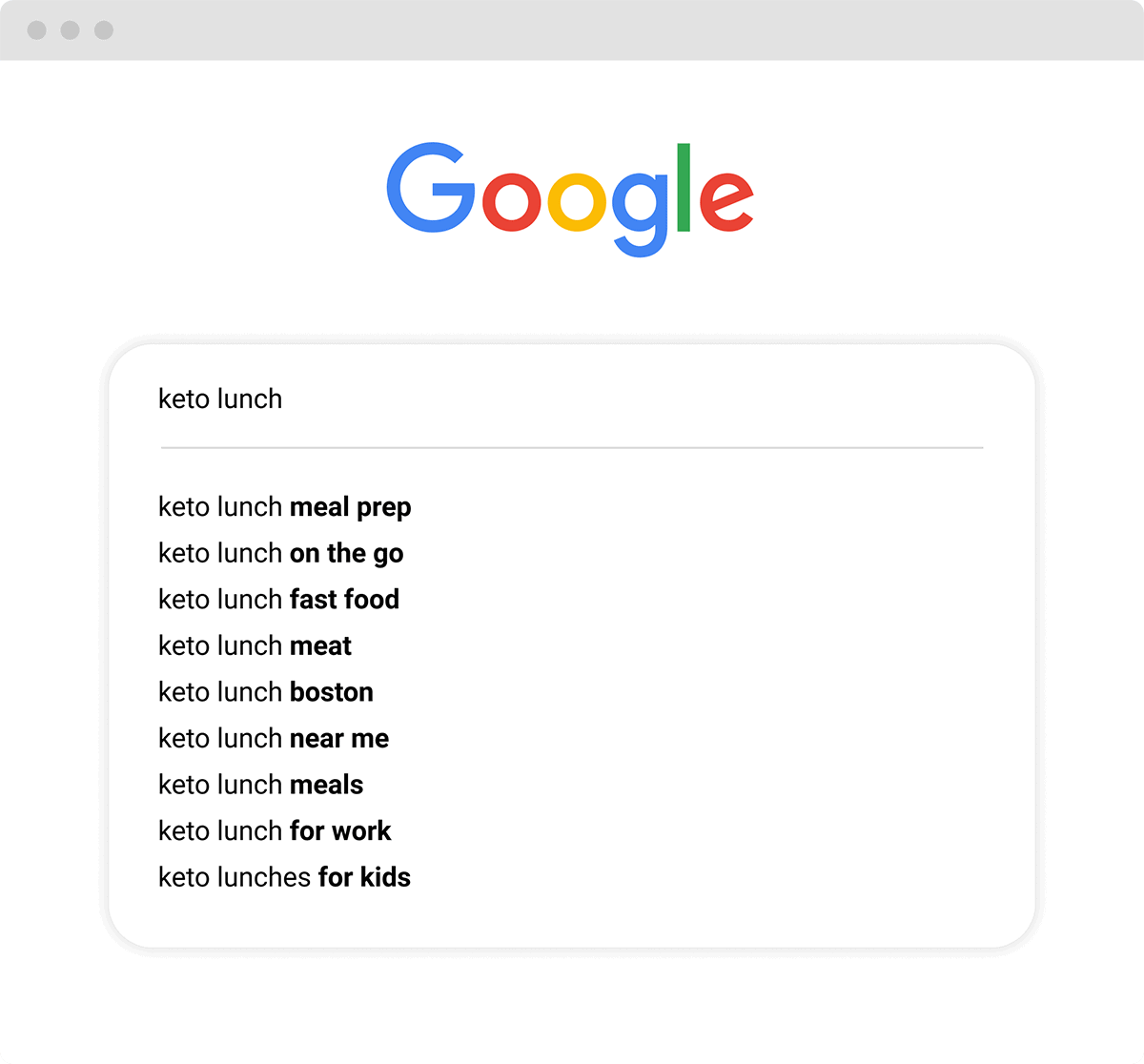
Search Intent
Search Intent is the intention of the user behind a keyword. Search intent optimization helps to have a more effective content strategy, create relevant content and rank higher on the search engine result page. There are four types of search engines:
- Commercial investigation: these words represent the intention when a customer wants to research any product before purchasing any product. These may include words like best, compare, reviews, etc.
- Transactional intent: this signifies the intent of buying any product. These are the converting intent of a visitor to become a customer. These may include words like cheap, for sale, under rupees sys, etc.
- Navigational intent: these navigate to a specific website. These specific words may include brand names or website names, etc.
- Informational intent: these types of searches are done to gain information about any topic. They are searching for answers to questions like who, how, what, when, etc.
Keyword Research
keyword research is the survey of queries and searchings related to your website’s content. The process includes finding and analyzing search terms people enter on the search engine. In a way, we can say that keywords are the backbone of SEO. All your rankings depend on keywords; hence, conducting efficient and effective keyword research is very important.
Before keyword research, you should be able to answer a few questions related to your content, like,
- What do you want to rank for?
- How is your current SEO?
- Which keywords do you rank for currently?
- Which keywords your competitors used?
- Who is your customer?
The essentials of keyword research are
- Relevance of keywords according to the content and the search intent trends. Search engines rank a website based on the relevance of content concerning the queries.
- Authority: search engines aim for the best experience for the users. To achieve this, search engines only rank authoritative content higher. Enriching your content with informative content with keywords attracts the search engines to rank your website higher.
- Using keywords that do not have volume searches are not helpful. You will add these to your content but will not get any results.
- You can only find valuable keywords when you know the marketing trends and insights. Conducting effective keyword research can provide you with current marketing trends.
- If your business has content other companies need, try to provide a range with a call to action and lead them to the buyer journey.
Tools for keyword research
There are many free tools available to make keyword research easy and efficient. Let us have a look at those.
- MOZ Keyword Explorer:
Using various features of MOZ keyword explorer, you can generate keyword suggestions, even those you can’t think of as keywords. SERP analysis reports plot which keywords you should use and how to place them. It also reports on how a particular keyword works for a website and how it enhances the website. The page report includes page scores via MOZ Pro’s grader tool.
Creating a keyword list will help you track and compare the keywords according to their search volume. Previewing the features for each keyword. Performing organic keyword comparisons with competitors will make you better than them.
- Google keyword planner:
Make the most out of Google keyword planner using the following research sequence.
-
- Discover new keywords: search for relevant keywords according to your content. The keyword research tool will help you find new words.
- Research keywords: you should find new and potential keywords with average or above-average search volumes. Google keywords planner gives insights into how often certain words are used. And are their popularity among audiences.
- Get bid estimate: A bid in keyword research is the amount a business is willing to spend over per click on the keywords companies use bidding to secure an ad space for essential terms related to their business. Google keyword planner has a feature that suggests the best bid for each keyword. Therefore you can plan your advertising budget.
- Make your plan: now, since you have the keywords with their respective performance data, you can plan an effective advertising strategy and draft SEO-friendly content.
- Answer the public: It is one of the tools for keyword research. The tool gives real-time questions and trends to help increase landing page conversions and integrate answers to the public part of your keyword research. It finds questions and provides ongoing exposure to reach wider audiences.
Optimize images
Image optimization is an important step for creating and delivering high-quality content. Image optimization improves user experience. Following are some image optimization techniques:
- Resize your image: Image and file sizes are often misunderstood to be the same. The image size denotes the dimension of an image, for example, 123 x 456, while file size means the storage capacity a file occupies, for example, 12MB. You can adjust the image size and compress the file according to the requirements. While compressing, you should keep the picture quality as clear as possible because the picture quality is affected.
- Optimize file names: The file is another aspect of the image that plays a major role in ranking content. The file name should be legible for users and web crawlers.
- Use ALT tags: Users can see and understand the image’s content, but web spiders cannot understand the image’s content without alt tags.
- Images should be mobile-friendly: most 90% of the searches are through mobile. Therefore your content should be mobile-friendly. Search engines like Google first analyze the mobile version of the website to rank on the SERP.
- Image captions: Description of images using keywords and special characters following the current trends will increase your visibility on the SERP.
- Unique images: Stats and data images are used on all websites with similar content, but try to use new and unique images to supplement your content.
- The text should complement the image. You should use those images which can explain your text. The text and image should make sense together.
Image optimization tools:
-
- Image4.io: It detects the users’ network and device to deliver fast. The main features are increasing conversion rate and image SEO. It optimizes Images for mobile apps and websites.
- JPEG optimizer: As the name suggests, it only optimizes JPEG format images. It allows compression and selects the optimization levels. You can resize your image before uploading.
- Optimizilla: the tool helps to enhance the image quality after resizing. It can optimize both JPEG and PNG format images. It can be used for batch processing, uploading, and working on 20 images simultaneously.
- Compress now: It is also a bulk processing tool that can upload ten images simultaneously. Simply upload JPEG, PNG, and GIF images and apply one optimization level at a time.
WordPress image optimizer Plugins
WordPress plugins are the piece of software which plugs into your wordpress to add new functions on you site. the following are four best wordpress image optimizer plugins:
1. EWWW Image Optimizer:
EWWW Image Optimizer is a very efficient plugin for WordPress for image optimization. It allows you to choose lossy or lossless compression modes. There is no limitation on file size. It also maintains the privacy of the site. Compatible for bulk optimization with a lot of plugins and themes. It does not require API keys for compression.
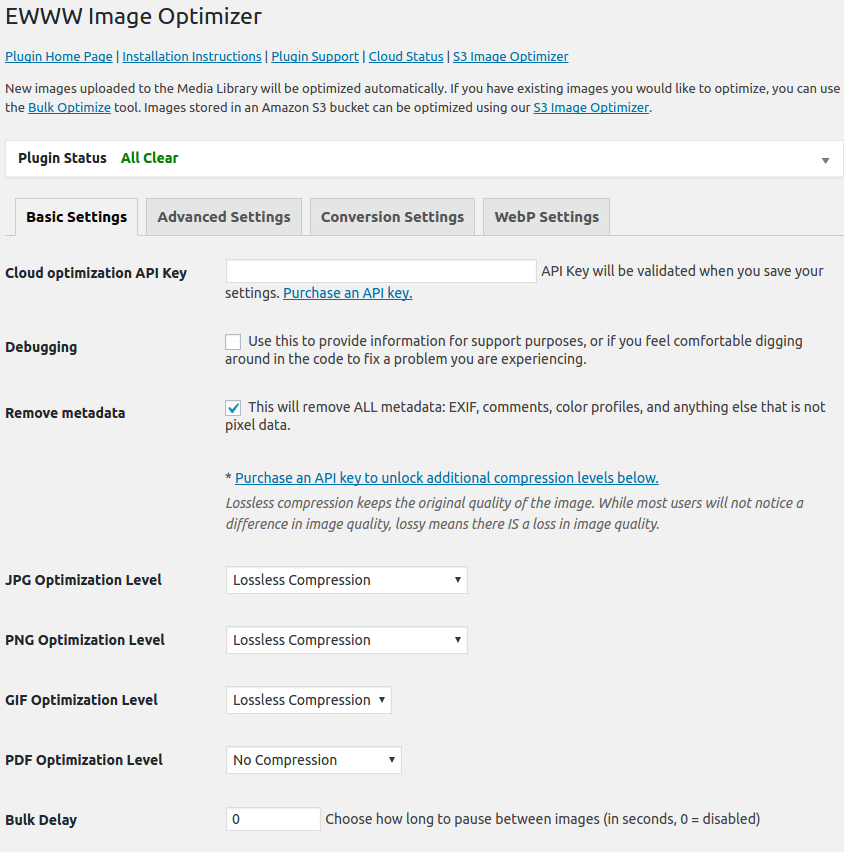
It offers three plans for the paid version.
-
- Standard plans include Cascading Style Sheets (CSS) optimization, limited content delivery network (CDN) 200 GB bandwidth, and one support site at the rate of offers 578 INR per month.
- Growth plans offer a global CDN, 400 GB bandwidth, and custom support at 1229 INR monthly.
- Unlimited plans contain unlimited sites, 800 GB bandwidth, and site speed audits at starting rate of 2065 INR per month.
2. Imagify:
Imagify is the compression plugin for WordPress. It has the best setting module with one-page manage settings divided into three sections- general settings, optimization, and display options. The features include
-
- Optimization testing by using the default smart optimization method
- lossless compression by using the default two-level compression method
- you can also set up certain tools for automation
- you can also optimize the theme of WordPress.
Plans and pricing offered by Imagify
-
- The free plan offers 20 MB, that is, 200 images uploaded per month.
- The growth plan offers 500 MB and approximately 5000 images uploaded for 344 INR.
- Infinite plans starting from 688 INR to be paid yearly, offering unlimited uploads
3. Short Pixels Image Optimizers:
It provides simple and quick buttons for compression type, handling image backups, and resizing large images. API keys are required for compression. the features include
-
- short pixel plugin provides lossy, glossy, and lossless modes for optimization.
- pdf optimization
- web image support
- cloud flare integration for CDN users
- conversion of images from PNG to JPEG format
- optimization for retina images
- thumbnail optimization
Pricing and plans
-
- 100 free images every month
- plans start from 330 INR for 7000 image credits with a file size limit of 100 MB
4. Optimole:
optimal plugin is clean and modern, having background tools. It requires quick account creation and API key insertion. The features include
-
- complete automated image optimization becausE powered by API
- Tracking image optimization details is the most exclusive feature
- it provides lazy loading and image-resizing features
Pricing and plans
-
- A free plan allowing 5000 unique visitors per month with unmetered bandwidth
- Billed yearly plans starting from 1570 INR per month (when paid yearly) allow 50000 unique visitors with auto-scaling, lazy loading, and customer support.
- A business plan starting from 3222 INR per month allows 100k visits.
Internal linking
An internal link connects one page of your website to another page of your website. These help crawlers understand your web architecture. Every long-form content should have 3-4 internal links. These links establish a relationship between content.To set up an internal link, follow these steps:
- Determine the ideal structure for your site.
- Decide what is your most important content.
- Add contextual links
- Link hierarchical pages
- Consider adding a related post section.
- Try adding navigational links
- Add links to your taxonomies
Types of internal links
Navigational links are permanent links that create the basic navigation network. It makes the website easy to access. There are different types of navigational links:
- Horizontal navigation links are the most common navigation links consisting of important horizontal website navigation. It forms a very simple navigation structure with few web pages only. These show up at the top of the website.
- Drop-down navigation links are used by that website with many navigation links. The sites with complex structures and many pages often use the drop-down linking method. For example, many e-commerce websites use these navigational links.
- Sidebar navigation links: As the name denotes, it appears on the side of the search bar. You can use these navigational links when a website has more primary than horizontal links.
- Footer navigation links: these navigation links provide an extra place for links that appears at the bottom of every page of the websites. Common examples are contact us, FAQs, about us, etc.
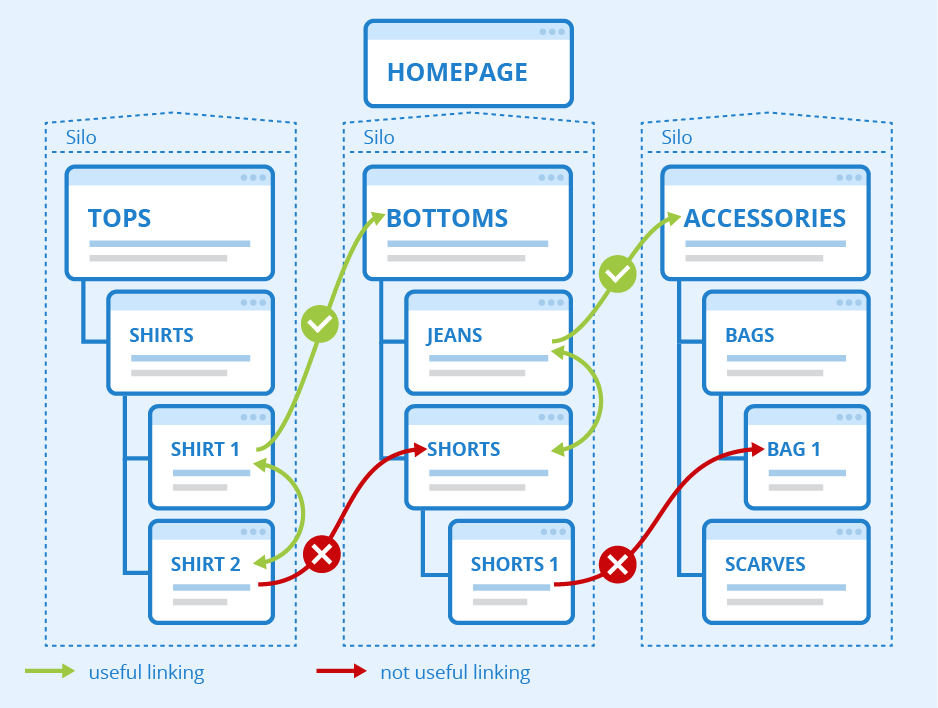
These navigational links can be used separately or concurrently based on the need and content of your website.
Contextual links connect other content of the same websites or some other websites. They are commonly placed in the main body of the content in descriptive anchor text. For example, I already have an article on SERP on the website, and I use the word “SERP” in this article, so I also link that article here.
Backlinking
Backlinks connect a website to some other website having relevant content. Search engines see backlinks as a vote of confidence. Search engines discover your pages faster if you get backlinks from popular pages.
Types of conceptual backing:
- Editorial backlinks: these are formed when some other content is liked up from your previous articles roundup on a topic.
- Backlinks from guest blogging: This means adding links to another popular website page.
You can check backlinks using google console. there are three sections
- Top linked pages: the most liked pages on your website.
- Top linking sites: the sites with the most backlinks to your websites.
- Top linking text: the most frequently used anchor text.
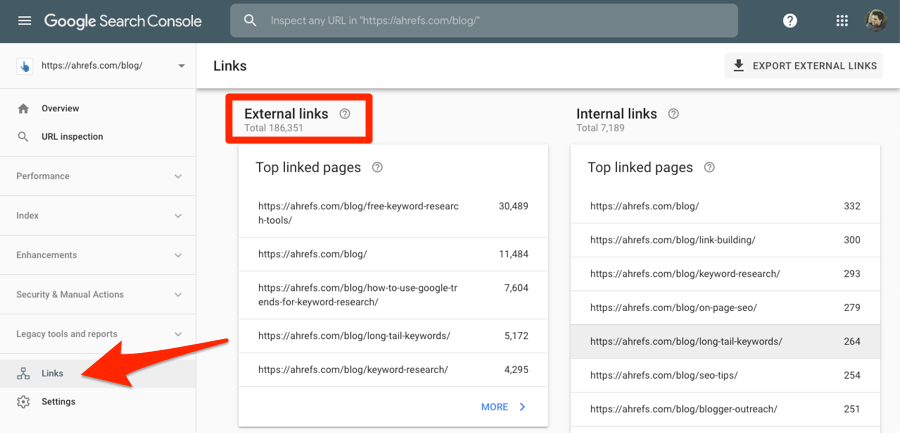
Backlinks to be avoided
- Avoid using paid links. Search engines look at your websites and observe how many real trusted backlinks you have. Paid links will negatively affect your SEO.
- Avoid using backlinks in press releases that do not have any news. This is considered spam.
- Low-quality irrelevant directories are not trustworthy. They will not help you improve SEO but rather negatively affect the SEO.
- Avoid using those forum backlinks that post maximum content in the form of hyperlinks.
- Backlinks from domains having high spam scores will also decrease your SEO.
Backlinks to be valued
- Backlinks from trusted websites
- Links from anchor text having your targeted keywords.
- Links from those websites having relevant content for your topic
- Links having the do follow tags.
- Backlinks from domains that have not linked you earlier.
5-pointer strategy for effective link building
-
- Creating content worth sharing and linkable assets. Keeping it natural and picking up those topics which others are looking for. This will invite other content creators to use your content links. Serve as a source of content for influencers.
- Broken links are very use full for creating backlinks. Search for websites related to your content, find broken links, and put your content backlinks. Offer the web page owner to replace their broken links with your content links.
- Infographics and video content are more legible than text. It is shared more, attracts backlinks, and maximizes your website’s outreach.
- Submitting testimonials and reviews to companies and sites for the products and tools you use to gain backlinks is also effective.
- Link reclamation is finding mentions of your links without including your links and then reaching the website to include your links.
Mobile-friendly websites
Mobile SEO is making a website suitable for mobile users. We only need to add more rules to desktop website SEO with those already applicable to create a mobile-friendly website.
95% of people use mobile devices for surfing on the Internet. Hence mobile SEO has become the most crucial factor for ranking.
Search engines now give more importance to mobile-friendly sites in their search results. Mobile-friendly labels will only appear in mobile search results. Mobile sites with errors will rank low or even lose ranking.
Responsive web design is more cost-effective than maintaining different versions of websites. Mobile Responsive website design is always the best option for small businesses. For large companies, the adaptive design will be best. Some benefits of responsive web design
- Helps to share content from a single URL
- Google can easily index all the pages
- More traffic
- Avoiding common SEO mistakes
Dynamic serving
Dynamic serving is the design that allows server response with different HTML and CSS codes on the same URL, depending on the user’s device. You can use various HTTP header tags to signal changes based on the user agent’s page request.
When your content is served dynamically from one server to another, ensure Google is informed that the server it is crawling will be differently presented on mobile devices. A significant drawback of this approach is that you must do additional processing from the start.
Separate URLs
The separate URL setup has two different URLs, one for the mobile version and one for the desktop version. The method is difficult to maintain as the effort and money expenditure doubles. You must avoid dissimilarity in your content on both website versions, but you may fail.
Another problem is that for each different URL, the SEO ranking will be different. Your desktop URL ranking will never be added to your mobile URL ranking. Hence, having two different URLs for different versions of the same website is not recommended. You can use Rel-canonical tags to avoid content-related issues.
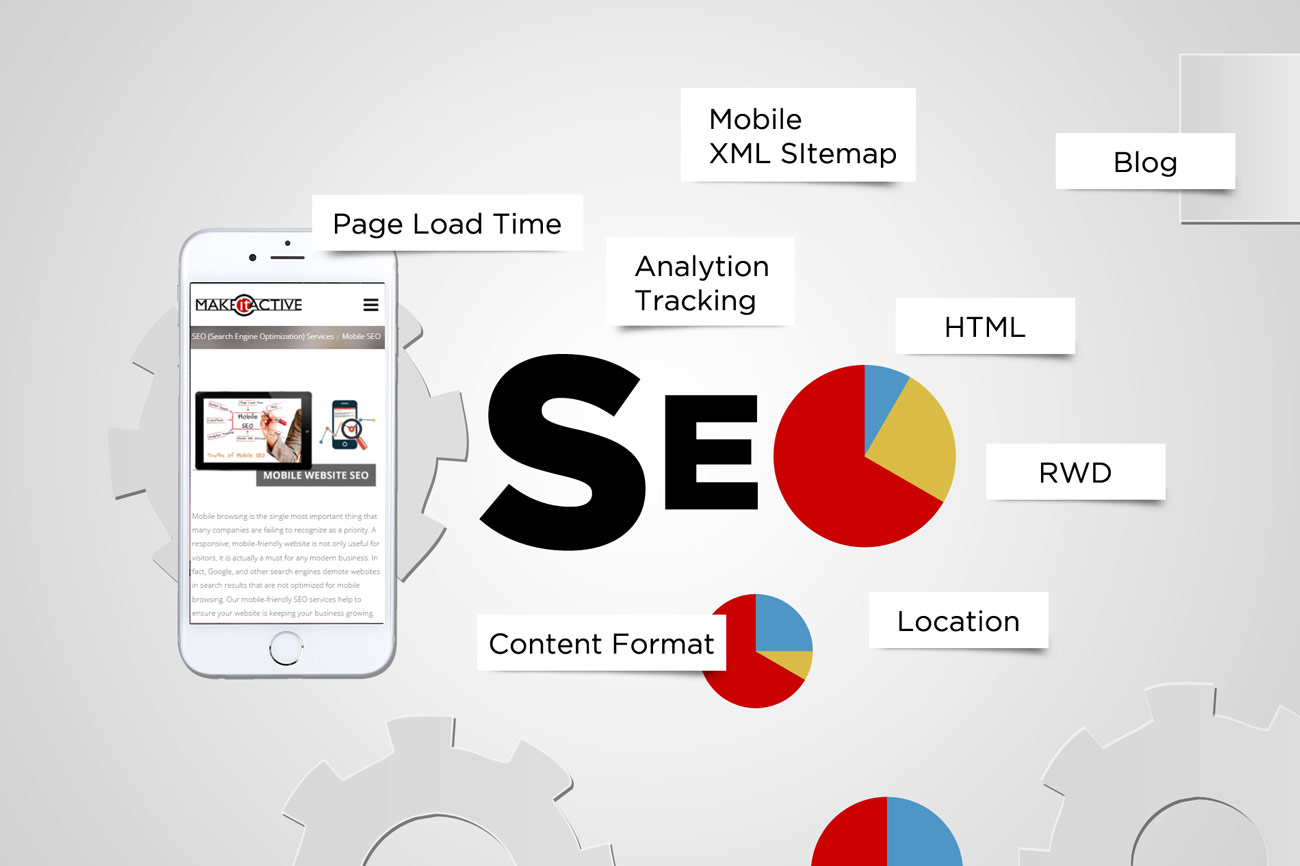
Slow mobile page loading:
Mobile networks are slower than wired broadband connections. Therefore, focus on optimizing the loading speed of the page. Make sure the content is on top of the page and should load faster. Then even if the page takes time to load, it would not be noticed.
Use minimum redirects to avoid bulking the site. Reduce the time for server response which should not be more than 200 milliseconds. This can be achieved by improving your server’s software and configuration.
Consider accelerated mobile pages:
An accelerated mobile page is an HTML page that is very lightweight and loads faster. Non-essential elements are removed, and only the required components are loaded. It reduces up to 85% of the loading time.
Don’t block CSS and JavaScript:
Developers often stop CSS, JavaScript, and image files on their websites. This does not reduce the page loading speed but limits the crawling and indexing process. The best approach is to keep all the files visible to search engines.
You can use Fetch as Google through the web admin tools to make your CSS and JavaScript crawlable. Check robot.txt to recheck that you are not hiding anything. Use minimum redirects and make sure that all the redirecting links are working.
Heavy images: images increase the loading time of the page. However, you cannot remove images from the content. All you can do is maintain a good balance between text and pictures. Image optimization is the only solution for avoiding bulky image files.
Build mobile sitemap:
Building sitemaps is an essential practice for SEO with the following benefits:
- More traffic engagement
- Improved user experience
- Higher conversion rate
- Increased on-site time
- Competitive market advantages
Geo Tagging for SEO
Local SEO
Any business having a storefront or needs local SEO to be more visible to appear in local search results on search results. According to Google, people search for certain types of businesses in their immediate area.
Google has now adapted to show results according to your immediate location. So even if you don’t mention any city or “near me,” Google will show results accordingly. Google has different algorithms local for ranking based on local map packs.
Local seo ranking includes all the seo practices in addition to some of the following practices:
Optimize for Google business: if your business is authentic, the search engine could reward your business with a covered sidebar. Add your location to your website for more precise local ranking.
Optimize online directories and citations: a local citation refers to any mentions of your company online. These could be in the directories. Local;l citations can help you rank on the local SERP.
Perform local SEO audits:
Performing local performance audits will help you enhance your offline direct traffic. The following audit reports may help:
- google business audits
- Google search console audits
- on-page SEO audits
- competitor analysis
- citation audits
- website audits
Create local content:
Become the local authority for your industry by promoting local industry gatherings, news, local employees, etc. The basic strategy for local publicity is to participate in your local community; the digital PR will be attracted you.
Local seo tools
Whitespark: Whitespark local citation finder offers local listing management. It recommends where to list your business, how examine your competition and monitor your citation growth for better local search ranking.
Pricing:
- small business plan: $25/month
- specialist plan: $ 50/month
- agency plan: $100/month
- enterprise plan: $200/month
Screaming frog: Screaming frog crawl websites’ links, images, CSS scripts, etc., From an SEO point of view. It analyzes up to 500 URLs for free and unlimited URL analysis in its paid version, which starts from $209/year.
Moz Local: It ensures the listing has been verified on Google and Facebook. It distributes your listing across the search ecosystems. Moz Local also collaborates with data aggregate to help push listings.
Pricing:
- Lite plan: $14 /month,
- preferred plan: $20/month
- elite plan: $33/month.
Ahrefs: It facilitates backlinking for website authority and performs competitor analysis, keyword research, and insights into other websites’ anchor text with backlink authority.
pricing
- lite plan: $99/ month
- standard plan: $199/ month
- advanced plan: $399 / month
- elite plan: $999/month
International SEO
International SEO is the process of optimization for reaching out to different countries. It is based on geo-targeting, which means delivering content or ads to consumers in their location. The global E-commerce market is expected to increase by 18.7% in the coming five years. In India, the e-commerce market is expected to grow by 25.5%.
Before investing in international SEO, analyze your websites worth in the international market. Find answers to a few questions like Do you already have international traffic? What languages do your visitors use before browsing? Do the present keywords the same as the international keywords? You can find answers to these questions from the check audience option of google analytics.
International SEO is different from regular SEO. Regular SEO only targets your home country or the targeted country, but international seo maximizes your international traffic and thus increases opportunities. Establishing an acceptable SEO for attracting international traffic takes time, but it is worth investing in.
Best practices for international SEO are almost the same as general SEO. The points which you need to emphasize are:
Optimize your URL structure: use a different kind of domain structure like:
The country top-level domain (ccTLD) is a two-letter domain assigned to specific countries. For example, .in for India, .uk for the united kingdom, and .ca for Canada.
A generic top-level domain (gTLD) has three or more characters. They are mined by Internet assigned number authority (IANA). For example, .gov .com, etc. 40% of domains end with .com. The search engines do not restrict these domains from showing data but do restrict traffic according to region.
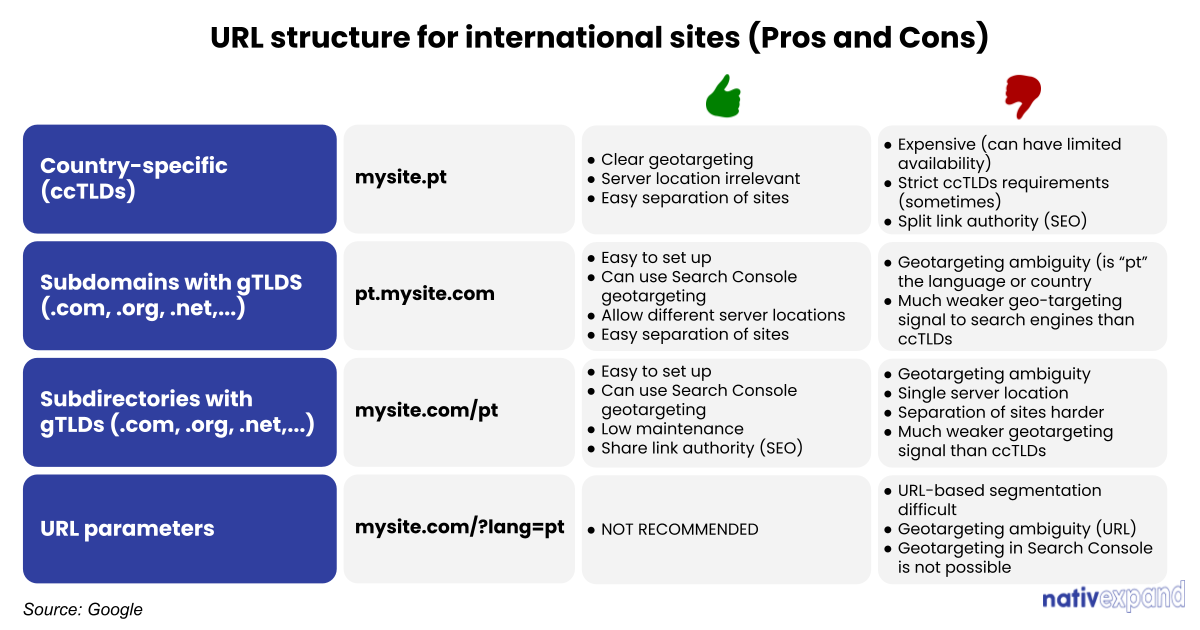
You can also use subdomains which are a mixture of ccTLD and gTLD. For example, nta.nic.in, etc., using subdirectories is also an option that changes the location. For example, in business/com/
Service in their language: everybody wants personalized content, and it will be even more attractive if it’s in their native language. Do not post in one language; post everything on your page or website in the region’s primary language.
Don’t use web translations. Do country-specific keyword research. Making your content keep the languages, demands, and culture of the local people of that country in mind makes your site trustworthy for that region. Thus you need to have a country-specific content plan.
International SEO should have an international backlinking:
- Build a backlinking strategy that follows the backlinking trends of those countries you want to target.
- Try to reach the country’s local resources and add links to the authoritative websites of the country.
- Host your website on a local IP address of the country and try to rank in the local search engines of the country, like Baidu in China.
Must Have Tool Kit For SEO
Google search console
Google search console is a free web service by Google for publishers and marketers. It is the ultimate tool for SEO. It monitors overall site health performance relative to Google search. It provides cutting-edge, real-time SEO data available. You need to set up and verify your google console profile.
“Requesting indexing” using Google’s Webmaster console
Change the default search from inspect and URL in doamin.com to something unique, type the specific URL, and press enter. If your site is already in the Google index, the information regarding it appears. If not, then the request indexing button shows ups.
Click on the button the result index details appears in a few seconds or minutes. You can use keywords related to your search for structuring a unique URL for which your website is ranked.
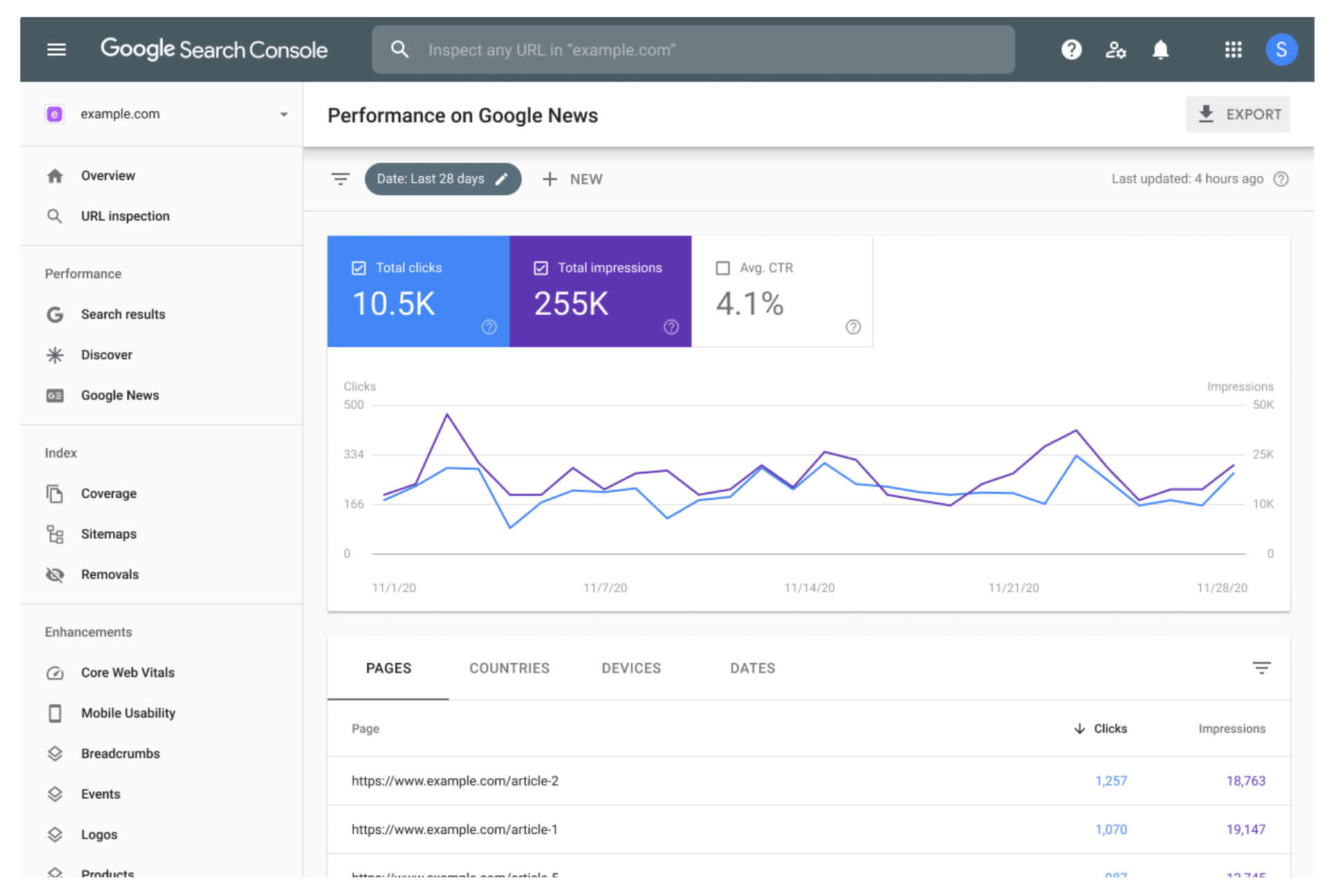
The following are some other features of google console that will help to improve SEO.
- Monitor page insights like keyword ranking click-through rate position of the data traffic.
- Monitor and speed up the indexing process.
- Identify the manual action and security issues and removes the problematic files on the page,
- Manages the page experience and core web vital
Bing webmaster tool
Bing webmaster provides SEO tools and easily imports data from the Google search console. The audit reports of the webmaster include search engine queries and clicks. It shows how much traffic you get from Google. You can find the page on which most traffic arrives and monitor the increase and decrease of the traffic. Identify and analyze which search engine provides traffic and your average bounce rate page views, etc.
Index Now works on the method of push protocol. XML site maps are based on the pull method, which pulls crawlers to visit and index the website. The index now has fewer data hosting and data centres resulting in fast indexing. Currently, only Bing and Yandex use index now. WordPress users can also have index now plugins.
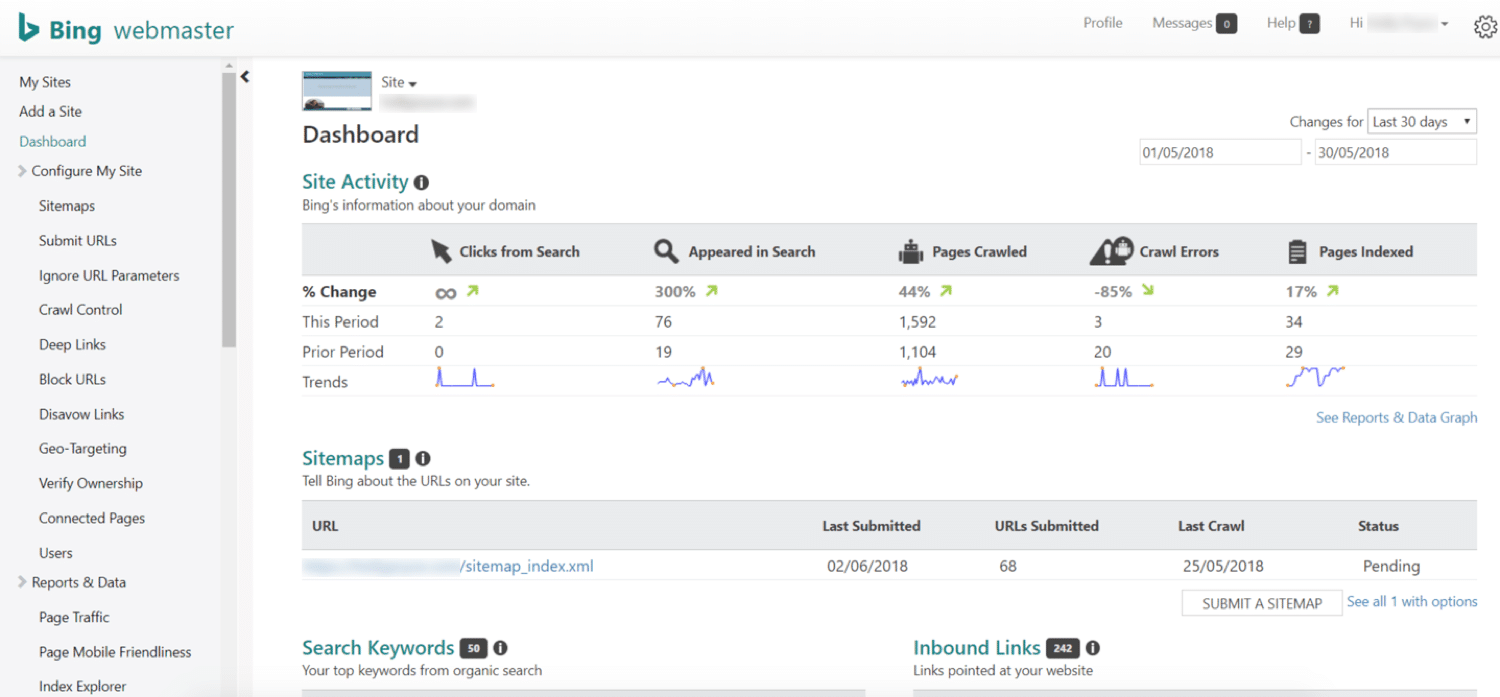
Bing’s webmaster tool is another valuable tool for quicker and more efficient website indexing. It gives helpful information that can enhance the websites in all aspects. For indexing,
- Click on the configure my website option of Bing’s Webmaster tool.
- Click submit URLs.
An indexing application programming interface reduces the time to show a website in search results.
Google Analytics :
Google Analytics is the tool that collects data from your website and apps to create reports that provide insights into your business. To take advantage of the free SEO tool, you first need to create a Google Analytics account. Then you need to add a javascript measurement code on your webpage; the tracking code will allow the google analytics server to crawl through your website and collect insights.

The following are some of the pain features of google analytics:
- Expertise in advanced traffic segments that provides insights into the value of your site. It allows users to determine the referrals, sources, and content that lead to conversions.
- Expert return of investment measures (ROI), google analytics is a very reliable tool for digital marketers as it measures metrics and ROI relevant to the business. A business should know how to allocate funds to the marketing strategy, which results in the best investment returns.
- A seo expert can use google analytics’ keyword tool to attract users effectively. This will help them to perform SEO best practices, as keywords are the major factors in keeping your content at the top of popular search pages.
Yoast SEO
Yoast seo is a WordPress plugin that helps to perform better in search engines by helping you optimize your site’s content. Yoast is an automated plugin but needs some input and planning. Let’s look at some of the key features of Yoast Seo’s
Ability to analyze the focus keywords of a page and ensure that it is being used properly. It checks keywords in the page title, subheadings, thoughts, the body of the content, etc.; Yoast provides an SEO analysis tab that shows your page’s status of a page or post for chosen keywords used enough in the text.
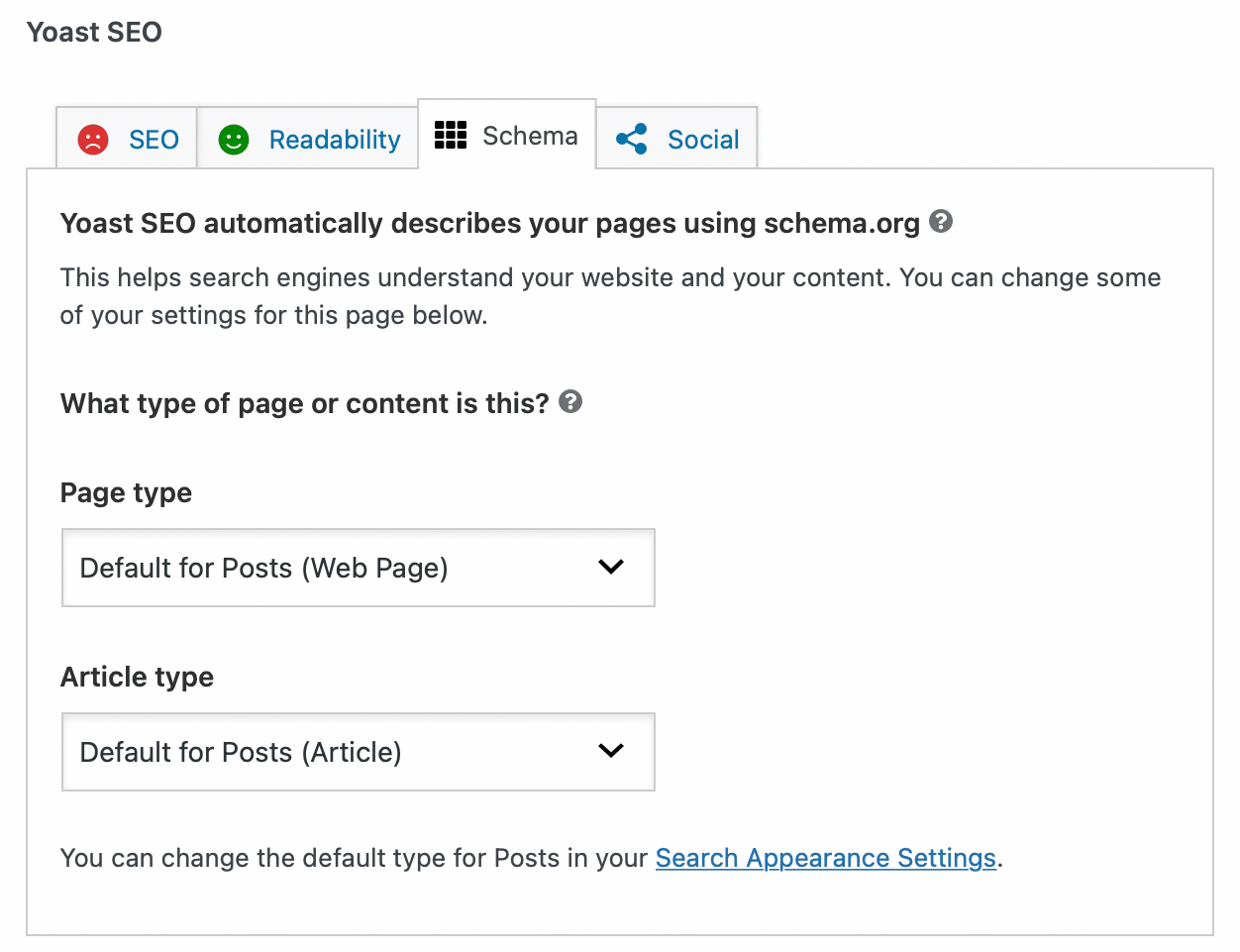
Yoast SEO also checks the readability of the content. It gives suggestions to improve clarity, like adding transition text, breaking long paragraphs, etc. Good readability improves your content and enhances users’ experiences, raising your rank on SERP.
Yoast SEO analyzes the technical optimization of your website. It generates and verifies the sitemaps, sets up your social media profiles, and creates and manages redirects. Site maps provide an overview of your website and allow it to crawl in the way you want.
Yoast SEO automatically creates sitemaps and updates them when you make any website changes. Yoast SEO provides redirector managers who manage the visitors, even with many redirect links.
Google trends:
Google Trends show the popularity of the given search terms. It provides information about the search volume index and the user’s location. Google Trends helps in the following manner:
- Find your niche: to start with, you need to have an outline of the topics of the content. You need to research the search terms. Google Trends help you to know the popularity of any topic. Gradually, you will narrow your keyword list with stable search volumes.
- Google keywords related to keywords that are trending. Those related keywords are listed in the order of popularity and their search volume percentages.
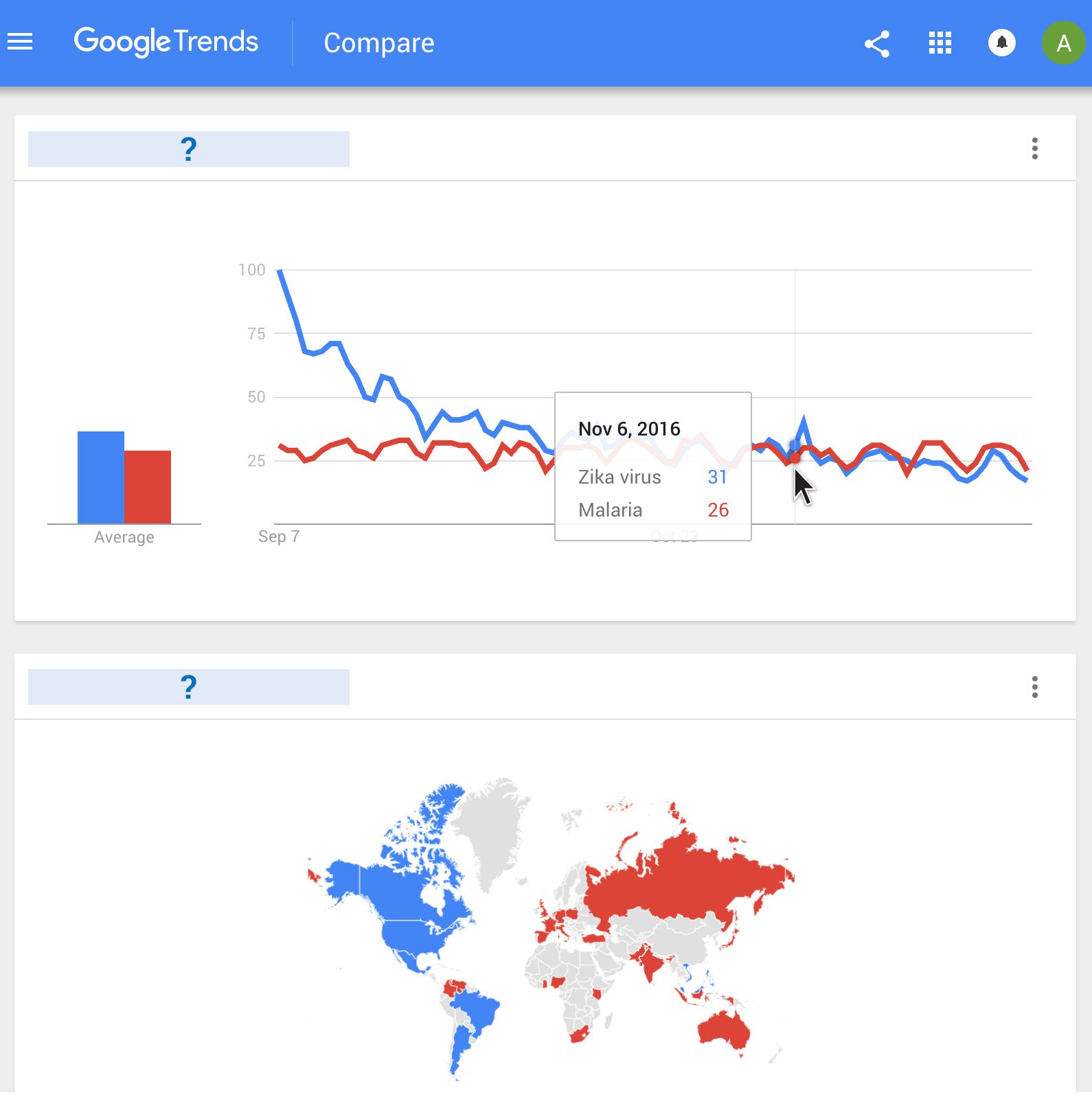
- Avoid fading keywords: google trends allows you to avoid keywords that are losing popularity. You can set a particular period for finding the popularity of a topic.
- Finding topics for blog and video content: google trends also have a “related topics” table which hints to you about how you should plan content for your blog or vlog.
- Google Trends map provides you with information about local trends. This helps you plan customized marketing campaigns for individual regions and expand into new markets. These maps will also tell your product demand trends in the individual regions.
- Google Trends has a comparison option to compare with your competitors and find their work.
SEO Metrics
Seo metrics are those data reports which indicate the performance of your website. These metrics should be monitored regularly to enhance your website’s performance.
Eight most important SEO Metrics:
1. Organic Traffic
Organic traffic is the most important seo metric. Without organic traffic, there will be no SEO-based conversion or revenue. Paid traffic increases your conversions but for a limited period. Organic traffic is the most reliable because of its long-term effects, and of course, it’s cost-effective. You can use google analytics or google console to track organic traffic trends.
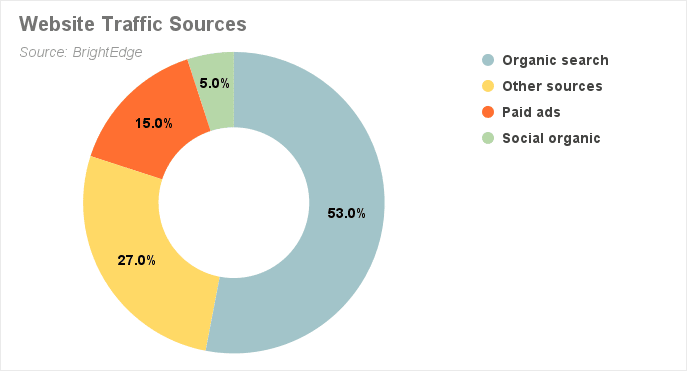
2. Click Through Rate (CTR):
Click-through rate is the percentage of clicks by users after seeing it on SERP. There is a close correlation between ranking and click-through rate. First position on SERP highest level of CTR and the percentage decrease with the decrease in the rank.
META tags do not align with the SEO guidelines, or keywords targeting different search intent may lower your CTR.search engines may show the answer on the top of the page, which results in zero-click searches and also affects CTR significantly. You can track your website CTR on the Google search console.
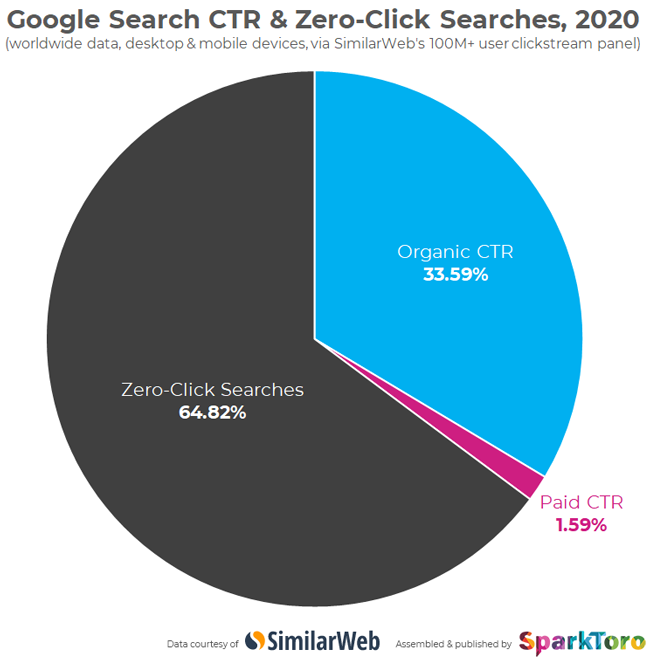
3. Core Web Vitals (CWV):
Core web vitals are the factors Google looks at to assess the overall user experience. These metrics are used for evaluating the following factors:
- The first contentful paint (FCP), the first point on the page timeline, is measured by FCP, where the users can see anything on the screen.
- The largest contentful paint (LCP) measures the time for the longest image or text block to become visible.
- Cumulative layout shifts(CLS) measure visual stability by quantifying how often a layout shift occurs.
- First, input delay (FID) estimates the load responsiveness and the browser’s time to process the event.
- Time to interaction(TTI) assesses the time the site becomes fully interactive.
- Total blocking time(TBT) estimates the time taken to measure the first contentful point and the time to become interactive.
The enhancement section of the Google search console will give you reports on core web vitals, and you can use Google’s page insights to get the metrics and some recommendations and suggestions for improvements.
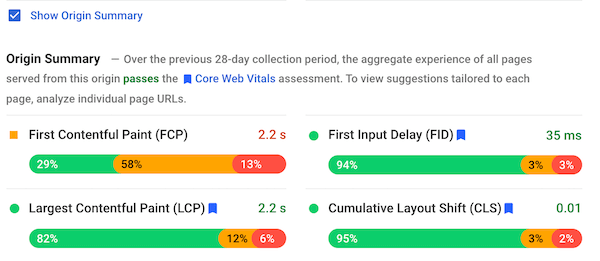
5. Backlinks and Referring Domains:
A recent study showed over 11 million Google search results suggest a strong correlation between ranking and the number of referring domains. Backlinks are all those links a website gets from external sources pointing to the website.
Referring domains are those numbers of unique domains to which you have incoming links. By identifying and analyzing referring domains, you can assess the relevance and quality of the site which sends you traffic. You can track the backlinks by Ahrefs site explorer.
6. Crawlability
Crawl stats shows how frequently a website is crawled. A site can be ranked based on crawl ability in two ways
- crawl request: is the total number of requests sent by a search engine in the given period
- response time: is the average time it takes for a page to respond to a crawl request and retrieve the content.
Crawl errors are also an aspect of seo metrics. Crawl errors occur when a search engine tries to reach a page on your site but can’t be indexed and won’t receive any organic traffic. The crawl ability test can be done on google console.
7. Page Indexed
Indexed pages show how many of your domain’s URLs a search engine indexed. Google search console keeps you informed of the number of indexed and non-indexed pages per day.
8. Organic Search Visibility
Organic search visibility measures how much organic search traffic comes to your site and how much you are visible to the targeted audience. Search engine visibility helps overcome the challenge of evaluating that and providing a clear picture. Ahrefs rank tracker helps you analyze your visibility trends.
Social SEO
Marketing strategy to attract, engage and retain audiences by creating and sharing relevant content. According to surveys, business blogs get 67% more leads than other companies. 72% business to business marketers say content marketing increases engagements and brings more leads. 88% say branded videos convinced them to buy a product. Content marketing increases online visibility and boast loyalty, and improves your website’s authority.
Content marketing and SEO must collaborate to provide users with relevant, attention-grabbing content. Design your content with a search engine in mind. Keep your content continual, meaning search engines prefer those who regularly update it.
Social SEO is the practice of including relevant information and keywords in your post to increase the chances of having your content on social media. It works like traditional SEO. Social networks are not technically search engines but have search tabs. Social media platforms are updating with features of traditional SEO to provide users with the best content they are searching for.

Social SEO helps your business by:
Making your content visible: Seeing your social media content was all about working algorithms, but now people are actively looking for relevant content. Social seo requires only observing users’ behavior for your content and showing your content.
Growing your social channels faster: social seo helps you connect with those who don’t follow you. In this way, you can more effectively grow your channels by reaching potential customers that don’t use traditional search engines.
Earlier social media was used only to view personalized feed content from specific people and brands they follow. But social media servers as a platform for searching specific information like product reviews, recommendations, etc. lets now look at some SEO tips for some popular social media platforms:
Instagram SEO tips
- Optimize your Instagram profile SEO. Use keywords in your name, and handle and include a location if relevant.
- Include relevant keywords and hashtags in the captions of the stories and posts. This helps your content appear on the keyword search pages.
- Add alt-text to make content more accessible. It helps Instagram understand your content and serve it in response to relevant searches.
- Using subtitles also helps to target keywords.
Facebook SEO tips
- Optimize your page SEO by using keywords in your page title, vanity URL, about section, and description.
- Add business address and location pages if you have different outlets to your profile.
- Include relevant keywords in your post’s caption.
- Use specific descriptive alt text in your images for better visibility.
Youtube seo tips
- use primary keyword phrases as the video file name.
- Incorporate phrases in the title, use keywords in the description,
- say keywords in your videos, and turn on the caption.
- Create how-to videos
Top 8 Emerging SEO Trends For 2023
1. The new E in the EEAT criteria:
The EEAT criteria are E- the experience of the content creator, E- expertise on the topic, and A- authority and T-trust. The criteria will continue to remain important for SEO. The experience of the content creator becomes a significant factor with the increase of auto-generated content ranking on the SERP.
Increase emphasis on the author’s authority by including his bio and links to social media accounts. You can also create author pages containing all the articles the author wrote. High-quality content is essential, but the content should be satisfying and helpful to the user. You can follow these activities to satisfy the EEAT criteria:
- Content should be from the natural person for real users, not for search engine crawlers
- Content should be appropriate for the targeted audience
- Displaying the depth of knowledge for the subject area of the article
- On the quality and quantity of the content
2. Artificial Intelligence for SEO:
Artificial intelligence is gradually integrating with SEO. AI and content writing software are time-saving alternatives, so many content marketers use them. Entirely auto-generated content is still not preferred by search engines. Since competitors may have similar content, hence content should be from real writers. A human touch is essential.
However, AI tools can be used to enhance your content quality. AI has been coming in trend for the past few years. Google announced its first RankBrain as its AI to help process search results in 2015. By 2019 RankBrain was used for all the search queries. In 2017 google announced mechanical learning as its system against spam. AI will soon become a critical factor for SEO.
Currently, AI-based tools are gradually making SEO easier. For example, SEO Vendors CORE AI analyze the website more effectively for seo. SEO vendor tools are AI-based, making keyword research more accessible and helping create content. We can expect more SEO automation AI tools in the coming years.
3. Fast-loading, high-performing websites:
In 2023, page speed insights and core web vitals will still be essential tools for monitoring and evaluating the speed and performance of the website.
4. Less crawling frequency:
Google is trying its bit for sustainability. The crawling frequency will be reduced. It will affect refresh crawling, while search crawlers will be identical. Google will now take time to notice any update on your website. Thus optimizing your content from the start is very important for SERP rankings.
5. Voice search will become more common:
With the widespread of intelligent voice search assistants, it will become the new searching method. Optimizing content for voice searches will become a critical component of SEO. Websites need to adapt according to new search trends. Voice searches include long-tail keywords and complete query sentences.
6. Passage indexing:
Google is trying to understand the page through natural language. Passage indexing is not like regular indexing. It is not about ranking or displaying a page. Neither it’s about extended snippets. Google understands the query and detects the best answer, which may not be a snippet but a section of the page.
Passage indexing will boost long-form content and reduce the importance of on-page SEO. The structure of your content will matter a lot. Since passage indexing will become a vital factor for SEO, you need to focus on the outlines and structuring of your content. Divide the content into multiple sections, with each having subheadings.
7. Customer analytics, retention, and lifetime value:
This year, we must focus more on the gap between traffic and SEO return on investment. Content should be focused on users’ needs and less on the web crawlers. It is expected that keywords will not be essential developers need to emphasize customer behavior. Keywords are not always helpful, while behavioral analysis brings new content opportunities. According to Google, 15% of the daily searches are new questions.
8.Brand SERP optimization, knowledge graphs, and entities:
Google should know everything about your website. We can optimize a brand’s digital presence, like social media accounts, etc., to influence Google to feature them in how the brand wants to be presented.
Knowledge graphs represent a data network on a particular topic and illustrate real-world entities’ relationships. Enteritis hear means topics. This year keeping an eye on brand SERP and knowledge panels will be necessary.
Some activities which can help are
- Ensuring a correct and complete organization markup
- A strong presence on knowledge bases such as Wikipedia
- Setting up a Google business profile
An SEO-friendly website is the most important step for establishing and maintaining your business worth among the audience. I have tried to summarize the best of my SEO knowledge based on research. I hope this SEO guide will help you to get the most out of the SEO checklist ticked and rank higher in SERP.